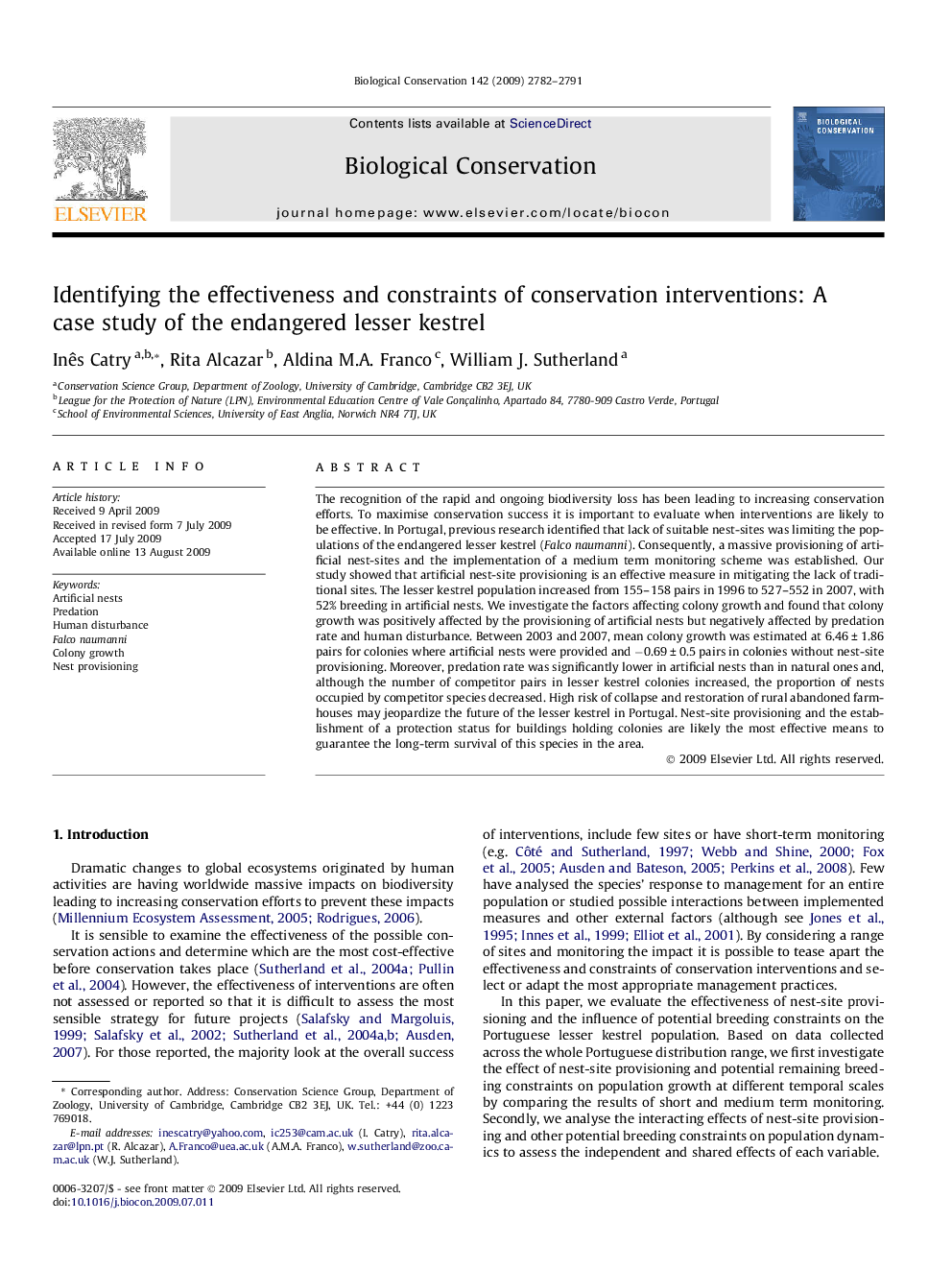| Article ID | Journal | Published Year | Pages | File Type |
|---|---|---|---|---|
| 4385882 | Biological Conservation | 2009 | 10 Pages |
The recognition of the rapid and ongoing biodiversity loss has been leading to increasing conservation efforts. To maximise conservation success it is important to evaluate when interventions are likely to be effective. In Portugal, previous research identified that lack of suitable nest-sites was limiting the populations of the endangered lesser kestrel (Falco naumanni). Consequently, a massive provisioning of artificial nest-sites and the implementation of a medium term monitoring scheme was established. Our study showed that artificial nest-site provisioning is an effective measure in mitigating the lack of traditional sites. The lesser kestrel population increased from 155–158 pairs in 1996 to 527–552 in 2007, with 52% breeding in artificial nests. We investigate the factors affecting colony growth and found that colony growth was positively affected by the provisioning of artificial nests but negatively affected by predation rate and human disturbance. Between 2003 and 2007, mean colony growth was estimated at 6.46 ± 1.86 pairs for colonies where artificial nests were provided and −0.69 ± 0.5 pairs in colonies without nest-site provisioning. Moreover, predation rate was significantly lower in artificial nests than in natural ones and, although the number of competitor pairs in lesser kestrel colonies increased, the proportion of nests occupied by competitor species decreased. High risk of collapse and restoration of rural abandoned farmhouses may jeopardize the future of the lesser kestrel in Portugal. Nest-site provisioning and the establishment of a protection status for buildings holding colonies are likely the most effective means to guarantee the long-term survival of this species in the area.
